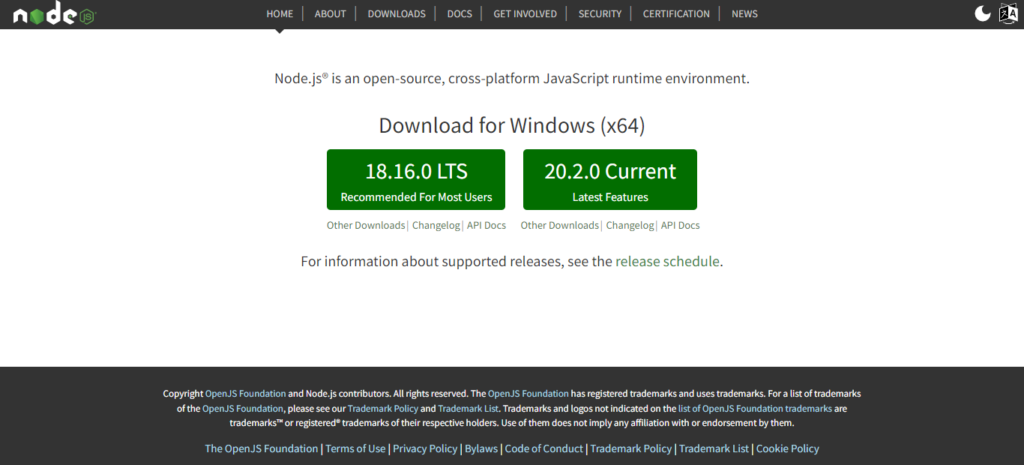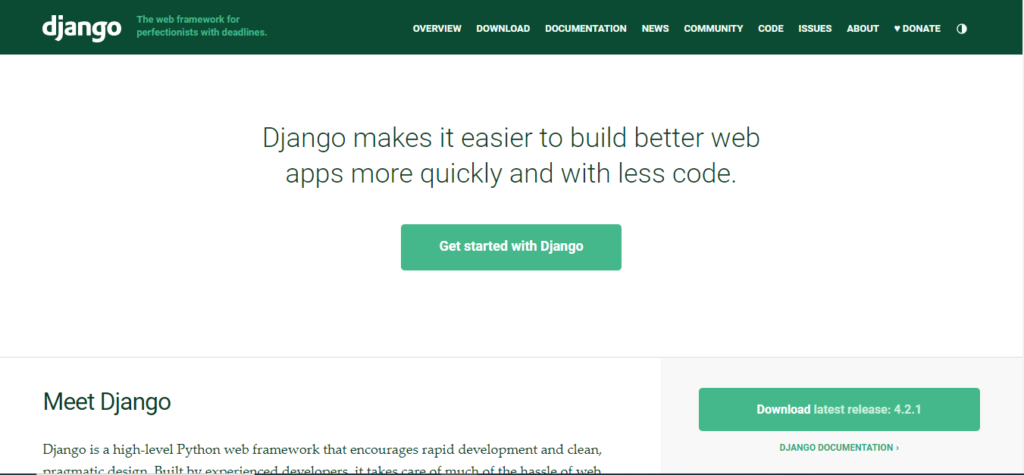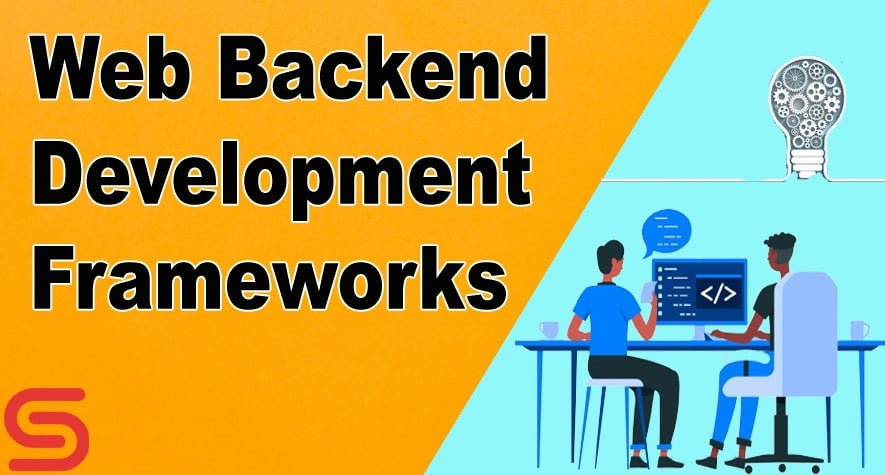Frameworks have become an essential part of web development; as the standards of web applications are always rising, so does the complexity of the technology needed. It’s limited to reinventing the wheel for such sophisticated techniques -assuming you can reinvent all that. That’s why utilizing frameworks supported by thousands of developers worldwide is a realistic approach to building successful and interactive web applications. A web app has a backend (server-side) and a frontend (client-side). In this article, we discussed the top backend frameworks.
What is Web Framework?
Web framework offers developers the essential resources and features while selecting procedures for completing the development of websites, applications, APIs, services, and other solutions. These frameworks enable you to rapidly select the foundation for your project and expand it further based on specific requirements. That may contain utility programs, code libraries, scripting languages, and other software that simplify developing and combining different components within a significant software project. You can leverage pre-designed templates and customizable features to suit your needs on flexible web development platforms.
What are Backend Frameworks?
Backend frameworks are commonly known as server-side frameworks. These frameworks play a crucial role in developing websites and web applications. While other frameworks primarily focus on the frontend or user-facing factors of web applications, backend web frameworks offer a range of tools that facilitate the creation of backend functionalities. These include features like security measures, user authorization systems, database interactions, and URL routing mechanisms. In essence, backend web frameworks empower developers to handle the essential backend tasks necessary for building a robust and secure web.
Top Backend Framework:
Staying updated with the latest frameworks is crucial for developing cutting-edge websites and applications. Here are some highly resilient backend frameworks in 2023 that may use.
Node.js

Node.js is a commonly utilized backend web development framework assembled on Google’s V8 JavaScript device. These server-side JavaScript runtime conditions permit programmers to compose server-side applications that are scalable, quick, and sustain an extensive ecosystem of modules and libraries. Developers depend on Node.js for assembling real-time applications, including collaborative tools, online gaming, and chat applications, because the framework utilizes an event-driven architecture and a (single-threaded) possibility loop-based structure that confirms frictionless handling of simultaneous connections.
Price: Node.js is free to download and use.
Flask

Flask, a popular Python backend framework, is known for its compactness and effectiveness. As a micro-framework, it eliminates the need for additional tools or libraries. While Flask does not include certain functionalities like database abstraction or form validation, it offers flexible add-ons that seamlessly integrate with the framework, providing features as if they were native to Flask. These extensions cover object-relational mappers, form validation, file uploads, open authentication technologies, and essential framework tools.
Price: Flask framework software price is $0.02/hr.
Ruby on Rails

Ruby on Rails implies its fast and easy backend framework. Numerous popular websites, including Hulu, GitHub, Soundcloud, Shopify, Twitch and Airbnb, have leveraged it. Due to its immense popularity, you can find extensive support and resources. Its features in full-fledged frameworks like Angular, React, or Vue often require integration with other tools for backend development. That differentiates itself by prioritizing “programmer happiness,” offering comprehensive functionality for quickly setting up the structure of your project. It facilitates the creation of models, views, interfaces, and database connections.
Price: Average Ruby on Rails developer rates are around $81-100/hr.
Spring

The Spring Framework is a robust and versatile backend framework. It leverages Dependency Injection and Inversion of Control principles to establish loose coupling among application components, enhancing responsiveness. Its modular architecture supports various programming languages and frameworks, making it adaptable. In addition to the application framework, Spring provides a data access framework that streamlines interactions with application databases. It is especially for fewer programmers, which can result from the framework’s complexity and the abundance of available customization choices.
Price: Spring framework’s original price is $49.99, but now the current price is $14.99.
Laravel

Laravel is an expressive web application framework renowned for its elegant syntax. Its robust ecosystem of diverse toolsets offers seamless and efficient development using PHP. The vast resources within the Laravel ecosystem provide an effective advantage. It caters to all your development needs, from cross-platform development environments to debugging tools. Native features like subscription billing, app scaling, zero downtime deployments, and OAuth2 implementation come built-in, ensuring a modern website experience.
Price: The Laravel framework is free.
Express

Express is fastly evolving as the trending most useful framework for web development nowadays. It is widespread amongst Accenture, Uber, IBM and other multiple companies, and it’s compatible with frameworks like Sails, Loopback, and Kraken. It offers essential functionalities while preserving Node’s capacities, harnessing the powerful performance of asynchronous Node.js. Express is also highly flexible, accommodating full applications and REST APIs.
Price: Express framework is free and open-source software under the MIT License.
Django

Django, a Python web framework, is famous for its high-level nature, promoting rapid development and clean, practical design. Experienced programmers developed it; Django alleviates many of the complexities associated with web development, allowing you to concentrate on building your application instead of starting from scratch. It is freely available and accessible to everyone. Django’s primary goal is to expedite the process of transforming app ideas into fully-fledged products.
Price: Django is a free and open-source network.
Meteor

Meteor, known as Meteor JS, is a framework for conceiving contemporary online and mobile applications. It allows for fast prototyping and delivers codes that work across desktop, iOS, Android and web platforms by over half a million developers worldwide. Its could platform deployment makes scaling and monitoring incredibly easy and Galaxy. That makes Full-Stack Javascript apps with Meteor.js. It is specially used in 19,913 websites, according to BuiltWith.
Price: Meteor has an essential edition price of $0.08 and a professional $0.11. A free trial of Meteor is also available.
Beego

Beego is the best Go framework available to programmers regarding web development. Creating practical applications with its MVC framework, RESTful consent, and the bee tool is straightforward. Developers have unrestricted access to hot code collection, automated testing, and automated filling and deploying. With features like intelligent routing, pre-installed modules, and monitoring, it offers Go developers complete control over their web applications.
Price: Beego’s price is $29 monthly after a 10-day trial.
Last Words
Business persons should consider what their project and team require from a framework before making a financial choice. It offers insight into how to do something, and you’ll find multiple similarities between frameworks, even across another language, in the duplicate model. Some popular web development frameworks chosen today include the 9 Backend framework outlined above. We selected these frameworks for this list based on their features, whether they cost money or are free, and how well-known they are.

